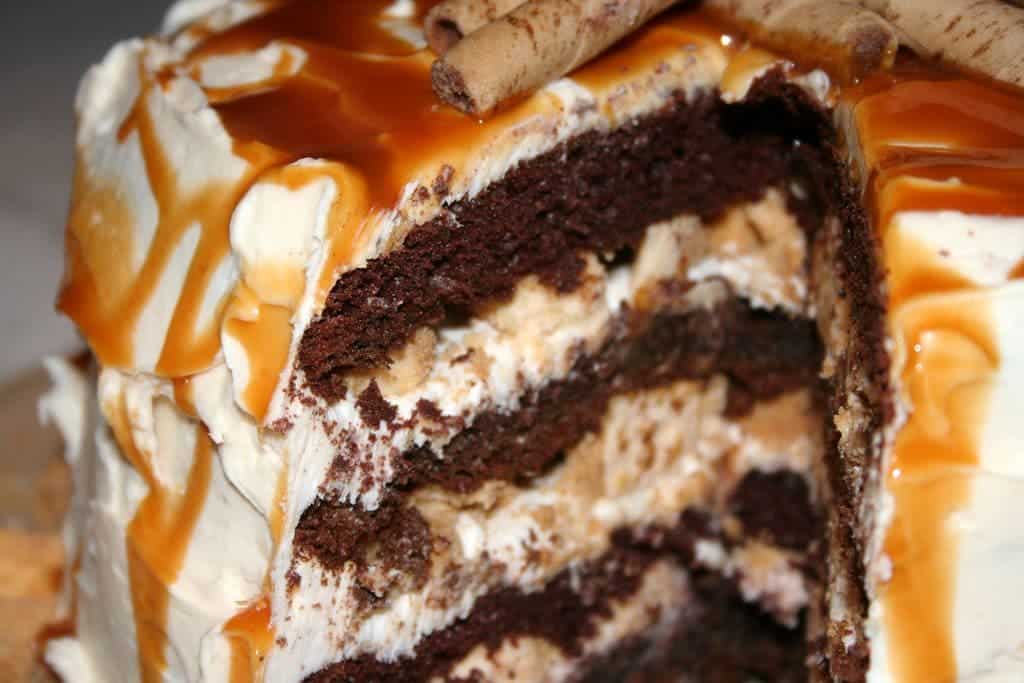Food packaging does influence the amount of calories consumed, a new study found. By showing portion sizes much larger than recommended, the pictures on various product’s packaging could make it difficult to eat healthy. Extras such as toppings or frosting on cakes are also usually not taken into account on nutritional labels, exacerbating the problem.

“Layer cake with chocolate bits. Layers filled with icing and cheesecake bits. Iced and topped with caramel sauce & cookies.”
Image credits to flickr user Ginny.
Dr. John Brand and his colleagues at the Cornell University Food and Brand Lab found that the way cakes are depicted on ready-mix cake packaging — in large servings covered with lots of frosting — cause consumers to overestimate portion sizes.
“If we see a slice of cake smothered in frosting on the cake box, we think that is what is normal to serve and eat,” he explained in a statement.
“But that’s not what is reflected in the serving size recommendation on the nutrition label,”
This can lead people to overestimate what constitutes an ordinary, healthy serving of the high-calorie desert, he and his colleagues found.
The team carried out a series of four studies to find out if images on food packaging can influence serving size. They used 51 different cake mixes to see if people would overestimate how much calories each contained by looking at the picture alone. This would in turn cause them to serve larger portions.
In the first study, they compared the cake’s caloric value as listed on the nutritional label with the actual number calories contained in the cake and frosting as shown on the package. The results showed that the products usually had 134 percent more calories than the label stated.
So for the final three studies, the team recruited undergrads or food-service professionals and gave each of them one typical cake mix box. Some were informed that the nutritional label doesn’t factor in the frosting, but most of them weren’t. They were then asked to asses whether or not the depicted piece of cake was a reasonable serving.
Undergrads that were warned about the nutritional labels’ inaccuracy wanted smaller portions than their peers. The final study found that even industry professionals would, on average, over-serve cake without that information.
“Undoubtedly, companies don’t intend to deceive us when they include frosting in cake box depictions, but these seemingly small elements of packaging can have a huge impact,” explained co-author Dr. Brian Wansink, director of the Food and Brand Lab.
Simply including a warning that frosting or other extras are not included in nutritional labeling would make packaging “less misleading,” the study concludes.









